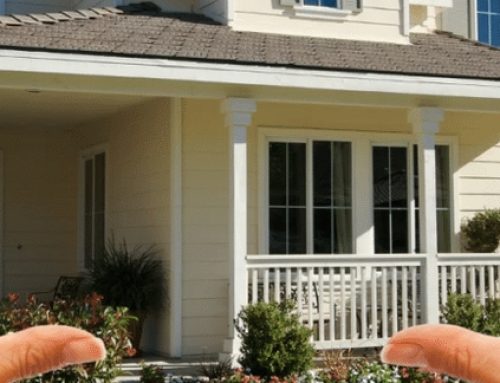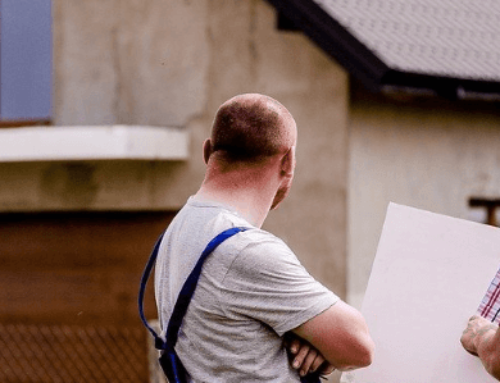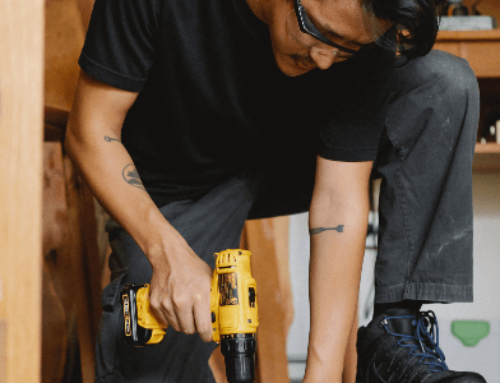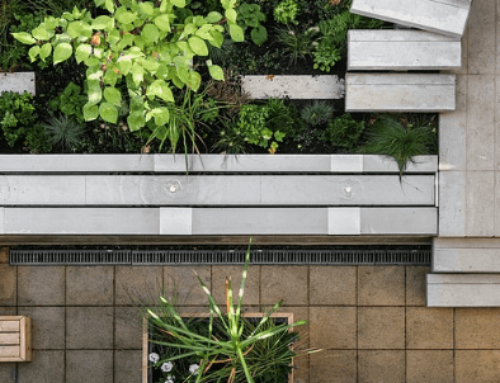If these walls could talk ….
Have you ever heard the phrase “if these walls could talk”? Well, if they could, they might have a lot of complaints about the building defects that they’ve been forced to endure. From leaky roofs to faulty electrical systems, there are a myriad of issues that can plague a home and make life miserable for its inhabitants.
Building defects are a common concern for property owners. Aging and the natural deterioration of building materials can lead to various faults.
The top time-tested building defects include plumbing faults, poor roofing materials, foundation and structural damage, hasty construction, and drainage issues. These defects can compromise a building’s structural integrity, and non-structural defects can affect a building’s appearance. Inadequate planning, poor quality, defective materials, or a combination of these factors can cause building defects.
Regular inspections can help identify defects and ensure timely repairs to prevent costly damage. Certain defects, such as those caused by pests, wood decay, and roof failure, require specialized inspections by trained professionals. Choosing a reputable building inspection company before making any significant investment in a property is important. Understanding the potential causes and types of building defects is crucial for building owners and tenants to maintain a safe and functional building.
Structural Issues: Common problems in the foundation, walls, and structural elements of a building that can lead to instability or collapse.
Building defects can lead to serious structural issues that compromise the safety and stability of a building. The foundation is particularly vulnerable to problems such as settlement, cracking, and shifting due to poor construction or soil conditions. These issues can cause walls to lean or bow, floors to become uneven, and doors and windows to stick or not close properly.
In addition to foundation problems, walls can also be affected by building defects such as water damage, inadequate insulation, and poor ventilation. Moisture infiltration through cracks or gaps in the exterior envelope of a building can cause mold growth and rotting wood framing. This weakens the structural integrity of the wall system over time.
Other structural elements of a building that are susceptible to defects include beams, columns, trusses, roof systems and floor systems. Defects in these components may result from improper design or installation techniques during construction. For example, faulty connections between steel members could lead them becoming detached causing instability leading ultimately collapse if unaddressed promptly by professionals experienced with resolving these types of complex engineering challenges faced by buildings with severe defects. It is important for property owners and managers alike to take proactive steps towards identifying potential hazards before they worsen into more dangerous situations which put lives at risk.
Plumbing Defects: Issues with pipes, drains, and fixtures that can cause leaks, water damage, and mold growth.
One of the most common issues found in a building inspection report is plumbing defects. These can range from minor leaks to major water damage and mould growth. Pipes, drains, and fixtures all need to be inspected regularly to ensure they are functioning properly.
Leaks in pipes or drains can cause significant damage over time if not addressed promptly. Water damage can weaken structural elements of a building and create an environment for mold growth which poses health risks for occupants. Fixtures such as toilets, sinks, and showers also need to be checked for proper installation and operation.
It is important for property owners or managers to address any plumbing defects identified in a building inspection report as soon as possible. Not only do these issues pose safety hazards but they can also lead to costly repairs if left unattended. Regular maintenance and inspections by licensed professionals can help prevent plumbing defects before they become major problems that compromise the integrity of the entire structure.
Electrical Problems: Unsafe wiring, faulty outlets, and other electrical defects that pose a fire hazard or electrical shock risk.
Unsafe wiring, faulty outlets, and other electrical defects are common issues that can pose serious risks to the safety of a building’s occupants. Such problems can arise due to poor installation or maintenance practices, outdated equipment, or inadequate building inspections. It is essential for property owners and managers to take proactive steps towards identifying and addressing such hazards.
One effective way to prevent electrical problems is through regular building inspections conducted by qualified professionals. These inspections should include a thorough examination of all electrical systems, including wiring, outlets, switches, circuit breakers, and grounding systems. Any defects or potential hazards should be identified and addressed promptly before they lead to more significant issues.
In addition to routine inspections, it is also crucial for property owners and managers to prioritize proper maintenance of all electrical systems within their buildings. This includes ensuring that any repairs or upgrades are performed by licensed electricians using high-quality materials in compliance with relevant codes and standards. By taking these steps proactively instead of waiting until an issue arises unexpectedly can help ensure the safety of everyone who lives or works within the building while avoiding costly damage from fires caused by unsafe wiring or other related issues.
Roofing Issues: Leaks, poor installation, and other problems with a building’s roof that can lead to water damage, mold, and other issues.
Roofing issues are a common problem in buildings that can lead to water damage, mould growth, and other related issues. Leaks caused by damaged or missing shingles or cracks in the roof can allow water to seep into the building’s interior, causing significant damage over time. Poor installation of roofing materials is also a concern as it can lead to gaps between shingles and improper sealing.
Building inspectors play an important role in identifying potential roofing problems during inspections. They examine the condition of the roof, including any signs of wear and tear such as curling or cracked shingles, and inspect for proper installation techniques. Inspectors will also look for evidence of previous leaks or repairs which may indicate ongoing issues with the roof.
It is crucial for property owners to address any roofing issues promptly before they escalate into more severe problems. Regular maintenance and inspections by qualified professionals can help identify potential problems early on and prevent costly damage down the line. Building owners should seek out reputable contractors who specialize in roof repairs and installations to ensure that their roofs are properly maintained over time without compromising safety standards.
Cooling Problems: Malfunctioning heating, ventilation, and air conditioning systems that can lead to uncomfortable living conditions and poor indoor air quality.
One of the most common HVAC problems is a malfunctioning air conditioning system. When an AC unit fails to cool a building properly, it can lead to uncomfortable living conditions and even heat stroke in extreme cases. This issue can be caused by various factors such as clogged filters, low refrigerant levels, or faulty compressors.
Another HVAC problem that can cause discomfort and poor indoor air quality is inadequate ventilation. Poor ventilation systems can lead to stale air, excess humidity, and even mould growth. It’s crucial for buildings to have proper airflow through their HVAC systems to ensure healthy living conditions for occupants.
Lastly, heating issues are another common problem with HVAC systems. In colder months, a malfunctioning heating system can leave occupants feeling cold and uncomfortable. Additionally, gas furnaces that aren’t properly maintained or ventilated pose a risk of carbon monoxide poisoning which can be deadly if left unchecked.
It’s important for building owners and managers to address any potential HVAC problems promptly before they escalate into more significant issues that could impact the health and safety of occupants. Regular maintenance checks by professional technicians can help prevent these problems from occurring in the first place while also ensuring optimal performance from your HVAC system year-round.
Waterproofing Failures: Issues with sealing and waterproofing that can cause water infiltration and damage to a building’s interior.
Waterproofing is an essential aspect of building construction, especially in areas prone to heavy rainfall or flooding. However, even the slightest mistake during waterproofing can cause significant damage to a building’s interior. Common issues with sealing and waterproofing include improper installation, inadequate materials used for sealing, and poor workmanship.
One of the most common consequences of waterproofing failures is water infiltration into a building’s interior. This can lead to extensive damage to walls, floors, and ceilings if left unchecked. The presence of moisture also creates favorable conditions for mold growth which poses health risks to occupants.
In addition to structural damage caused by water infiltration and mold growth, waterproofing failures can also result in high energy bills due to increased heating and cooling demands as well as uncomfortable living conditions such as dampness and musty smells. Therefore it is crucial that proper attention be paid during the construction phase when selecting materials for sealing and ensuring that they are installed correctly by qualified professionals.
Common issues with sealing and waterproofing include:
• Improper installation
• Inadequate materials used for sealing
• Poor workmanship
Waterproofing failures can lead to:
• Water infiltration into a building’s interior
• Extensive damage to walls, floors, and ceilings
• Mould growth which poses health risks to occupants
Other consequences of waterproofing failures are:
• High energy bills due to increased heating and cooling demands
• Uncomfortable living conditions such as dampness and musty smells
Therefore it is crucial that proper attention be paid during the construction phase when selecting materials for sealing and ensuring that they are installed correctly by qualified professionals.
Flooring Defects:> Poor installation, uneven surfaces, and other problems with a building’s floors that can create tripping hazards and other safety risks.
One common flooring defect is poor installation. This can lead to uneven surfaces, gaps between floorboards or tiles, and other hazards that can cause tripping or falling. Poorly installed floors may also be more likely to wear down quickly or become damaged over time, requiring costly repairs or replacement.
Another issue with building floors is uneven surfaces. This can occur due to a variety of factors such as settling of the foundation, improper installation, water damage, or natural wear and tear over time. Uneven floors not only pose a trip hazard, but they may also affect the structural integrity of the building if left unaddressed.
In addition to poor installation and uneven surfaces, there are other problems with a building’s floors that can create safety risks for occupants. These include slippery surfaces caused by spills or inadequate cleaning practices, loose carpeting which can cause tripping hazards especially on stairs and in high traffic areas like hallways. It is important for property owners and managers to regularly inspect their flooring systems for defects to maintain safe living conditions for tenants while avoiding potential liability issues from accidents caused by faulty flooring systems.
Insulation Issues: Poor insulation or gaps in insulation that can cause energy loss, uncomfortable living conditions, and higher utility bills.
Insulation is an essential component of any building as it helps to regulate temperature and conserve energy. However, poor insulation or gaps in insulation can lead to significant problems such as energy loss, uncomfortable living conditions, and higher utility bills. Inadequate insulation can also result in moisture build up, which can cause mould growth and other health hazards.
One common issue with insulation is improper installation. When installed incorrectly, gaps may form between the insulation material and the surrounding surfaces. These gaps allow air to flow freely through them, reducing the effectiveness of the insulation layer. As a result, heat escapes during cold weather while cool air leaks out during hot weather.
Another problem with inadequate insulation is that it leads to higher utility bills due to increased energy consumption. With insufficient thermal protection from external temperatures, HVAC systems have to work harder than necessary to maintain comfortable indoor temperatures leading to high electricity costs for homeowners or tenants alike.
To avoid these issues related to poor or missing insulations in buildings; regular maintenance checks should be conducted by professionals who are familiar with best practices for installing insulating materials properly so that they provide optimal thermal protection against extreme external temperatures all year round without causing additional stress on heating/cooling equipment used within homes/offices etc..
Windows and Doors: Poor installation, faulty seals, and other problems with a building’s windows and doors that can
Windows and doors are essential components of any building, providing natural light, ventilation, and security. However, poor installation can lead to a range of problems that compromise their functionality. For instance, if the windows or doors are not installed correctly, they may not close properly, allowing drafts and air leaks into the building. This can result in energy loss and higher utility bills.
Another common problem with windows and doors is faulty seals. Over time, weather stripping around the edges of windows and doors can become worn or damaged due to exposure to sunlight and moisture. When this happens, air infiltration occurs as outside air enters through gaps in the sealant. As a result, indoor temperatures become less stable during extreme weather conditions such as hot summers or cold winters.
Finally, aging windows or doors may also pose safety risks for occupants of a building. Old frames could be weakened by rusting metal parts or rotting wooden components over time which increases chances of break-ins from intruders who take advantage of these weaknesses in your home’s defence system.
In summary: Proper installation techniques should be used when installing new windows or replacing old ones so that they fit snugly within their frames without any gaps between them; Weather stripping must be checked regularly for wear-and-tear damage; And finally upgrading older models with new materials will help improve overall security while reducing energy costs associated with heating/cooling systems inside buildings
FREQUENTLY ASKED QUESTIONS
What are some common problems with window installation?
Poor installation can cause gaps around the window frame, leading to air infiltration, water infiltration, and energy loss.
How can faulty seals affect a building’s windows and doors?
Faulty seals can cause air leakage, water infiltration, and energy loss. They can also lead to mold growth and damage to the interior of a building.
What are some signs that a building’s windows and doors need to be replaced?
Signs that windows and doors need to be replaced include drafts, condensation, difficulty opening and closing, and visible damage to the frame or glass.
How can I prevent problems with my building’s windows and doors?
Proper installation, regular maintenance, and prompt repairs when issues arise can help prevent problems with windows and doors.
Can I install windows and doors myself?
It is recommended that windows and doors be installed by a professional to ensure proper installation and avoid potential safety hazards.
How often should I have my building’s windows and doors inspected?
Windows and doors should be inspected annually to check for any issues and ensure they are functioning properly.
Can energy-efficient windows and doors save me money on my utility bills?
Yes, energy-efficient windows and doors can help reduce energy loss and save you money on your utility bills.







Leave A Comment